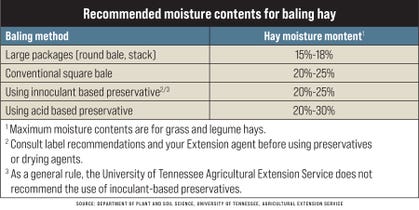
Days after a fire destroyed the hoophouse that stored his dairy farm’s hay, the charred bales of alfalfa and orchardgrass still smolder in a 1-acre soybean field on William Thiele’s dairy in Cabot, Pa.
Thiele co-owns an 80-head, 300-acre dairy farm and is one of three producers participating in our once-a-month Field Snapshot panel. The droughty weather has forced him to make last-minute changes on his operation, such as terminating cover crops early instead of planting green for fears that the cover crops would take too much moisture from the soil.
Now, he has to find another place to store his hay. Just before midnight on June 29, a fire tore through the hoophouse that was used to store more than 100 round hay bales.
Here is his account of the night, as posted on his Facebook page.
The first-cut hay, which he was going to feed to his pastured dry cows, was baled in late May and early June. With three straight weeks of no measurable rainfall on the farm, Thiele thought it made the perfect conditions to make dry hay. The fields were cut and dried in the field for four days before being baled.
The bales were then placed in a hoophouse Thiele had built 15 years ago.
“We’ve had that hoophouse for over 15 years and never had issues before,” he says.
He thought it was a cheap way of storing hay, as the building was just a structure with no electricity or any other utility running to it.
He says there were 108 hay bales in there.
Then, the night of June 29 came. Thankfully, no one was hurt. But it could have been a lot worse.
“We are assuming that because of the young hay, it likely wasn’t as far along as we thought,” Thiele says. “It felt dry, but it must not have been. It takes only one bale to get heated and hot enough to burst.”
Storing the bales was another thing Thiele says he could have done differently. The round bales were stacked quickly with little time to allow them to air out, he says.
Second cutting has already started. Thiele says the burned bales are insured, along with the acre of soybeans that got ruined when the charred bales were moved outside to smolder and dry.
Thiele says that he does not regret going with the hoophouse. In fact, he thinks he would likely go with the same design again.
But the house was only 25 feet from the dairy barn. He considers himself lucky.
“As hot as it was burning, if the wind direction was coming from a different direction, the dairy barn could have caught fire,” he says. “It could have been a lot worse.”
Prevent a hay fire
Hot, humid weather enhances the chance of hay bales spontaneously combusting.
Here’s some tips to prevent hay bale fires from The National Ag Safety Database and University of Tennessee Extension:
Watch the weather. Ideal hay curing weather has less than 50% relative humidity and some wind. The moisture content of the hay will increase overnight when the air is humid, especially if there is dew or fog. So, monitor weather forecasts carefully to help schedule haymaking operations.
Use a conditioner. Using equipment that crimps or abrades the crop stems is helpful because it speeds the drying process. Using tedders or hay rakes to gently fluff windrows may also speed the curing process.
Use a drying agent. When properly used, a drying agent or preservative can be effective, especially with high-quality alfalfa. But correct application is critical.
Check new hay bales first. These bales should be checked in the morning and afternoon. If the internal temperature of the bales reaches 130 degrees F, move it to allow increased air circulation and cooling.
Stack bales tight outside. Hay that will be stored uncovered and outdoors should be formed into the tightest packages possible to resist penetration by rain. Do not place unprotected bales or stacks tightly against each other. Place the bales where air can circulate freely and protect them from ground moisture and runoff by placing them on a bed of gravel, old tires, poles or pallets. Plastic or other waterproof covers will protect bales by shedding precipitation.
Watch for leaks inside. If you are storing the bales inside, make sure the barn roof and any plumbing do not leak. Also, provide adequate drainage so water will not enter the barn during storms. Wetting from a leak can allow bacterial activity to increase and result in a fire.
Watch for other issues. Spontaneous combustion is not the only thing that can cause hay fires. Lightning striking nearby trees or fences; arson; contact with electric fences; and sparks from cigarettes, welding or nearby fires can cause a fire.
Take the temperature. To accurately determine how hot it is inside a stack of hay, you should use a probe and thermometer. The probe is pushed or driven into the stack, and the thermometer is lowered to the end of the probe on a light wire. If the probe is horizontal, use a heavier wire to push the thermometer into the probe. After 10 to 15 minutes, retrieve the thermometer and read the temperature.


Read more about:
HayAbout the Author(s)
You May Also Like






